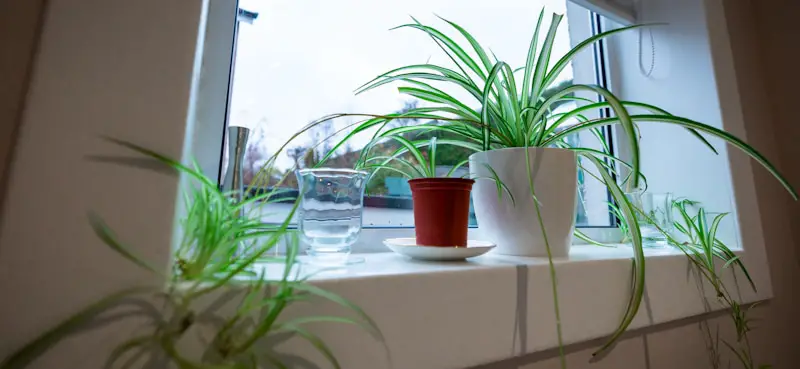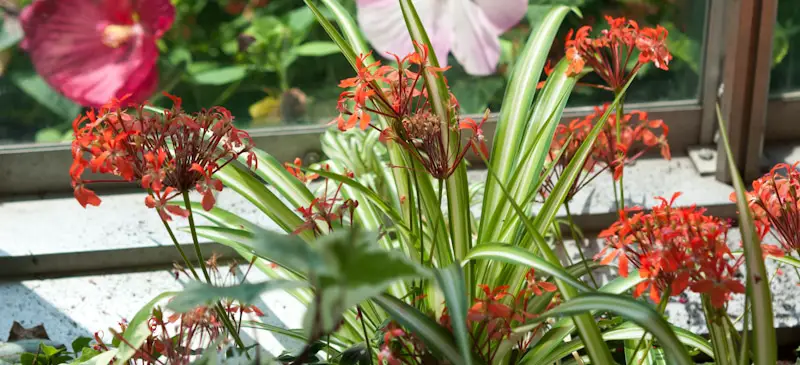Spider plant, also known as Chlorophytum comosum, native to Southern Africa, is a very tolerant and easy-to-grow household plant. As much as these plants are best cared for and maintained indoors, it needs more space to propagate well. However, before transitioning the plants, it is important that you know if these plants could survive outside or not.
If you supply them with the correct living habitat and transfer them progressively, spider plants could be relocated outdoors. Before bringing them outdoors, ensure they have adequate lighting and a comfortable temperature. A sudden shift in living conditions might be stressful for the plant.
Moving a plant from a confined space into the wild can be difficult. Numerous aspects can influence the plant’s development and health. It would be preferable to arrange the transfer ahead of time before deciding to relocate them.

Can Spider Plants Live Outside?
Before spider plants became household plants, they used to survive in the wild. These plants are native to the African region and often thrive well in warm weather conditions. However, over time, these plants have been kept, maintained, and reproduced in an environment different from the wild.
Now, since these plants have been conditioned to thrive in a different environment (indoor), we need to understand that taking them outside to live would require a slow transitioning and some considerations. A sudden transition could make the plant suffer shock.
Asides from developing shock, other factors like temperature, water, sunlight, pest, and humidity outside could equally affect the life of your plant. Some of these factors cannot be controlled by we humans; however, it is important to know how they could affect a spider plant. This knowledge would help us know when best we could keep our plant outside to live. Below, we will explain how each factor affects a spider plant.
Temperature
A major factor to be considered before taking your spider plant to live outside is the temperature of the region where you stay. Spider plants thrive more in warm climates with a moderate mercury level. The ideal temperature for these plants to thrive is between 70° to 90° Fahrenheit.
So, if you stay in a cold region during winter, you are best not advised to take these plants outside. Taking them outside to a cold environment could make them develop shock. In addition, people staying within zones 10–11 and 8-9 can place their spider plants outside during seasons like early fall, spring, and mid-summer.
Water
The rate at which a spider plant would require water indoors would differ from outdoors. When outdoors, the rate at which the water evaporates is higher than when indoors. So, you might need to give your plant more water than it used to take when indoors.
As much as the water requirement might be much outdoors, always ensure you inspect the soil water level before watering your plant to avoid too much water. Overwatering your plant could make its root rot and increase fungal infections. Lack of water could also make your plant leaves turn brown. So, ensure your plant gets the required amount of water it needs.
Sunlight
Sunlight is very important to all plants; however, the only difference is the amount they need. Spider plants thrive well under indirect bright sunlight; that is why they do well indoors. The effect of direct sunlight on spider plants is that it could burn the plant leaves and make them go brown.
Now, when placing them outside, you are expected to put them in areas where there are shades, such that sunlight does not shine directly on them. So, if there are no places around with shades, you are best advised to keep your spider plant indoors.
Pests
Pest attacks are not great for any plant, as they always end up sucking the nutrients from the stem and leaves till it gets dried up. When outside, a spider plant is more prone to pest attacks than indoors, especially when the plant is wet. So, when placing your plant outdoors, you might need to ensure it does not stay too wet.
However, a pest attack might eventually be inevitable regardless of your diligence. In cases where your spider plant gets attacked by pests, you would need to get a pesticide to get rid of the pests.
Spider Plants Outside
Since spider plants are native to the tropics, they prefer a warm, humid climate; after the last winter in your area, you can consider bringing your spider plant outdoors. It is best to wait a minimum of a week from last winter before moving your spider plant outside. As a result, you can bring your spider plant outside in early summer or late spring.
We must relocate your spider plant gradually to preserve its health and growth. You should do a few things to ensure a seamless and stress-free transfer. Take your spider plant outdoors for a few hours in the shade before bringing it back inside. Repeat the practice for a few days, increasing the time they spend outdoors by some hours each day.
After some days of rotating them in and out of the shadow, it is time to put them in the morning or evening sun for some hours. You can acclimate the spider plant to improved lighting settings by continuing the method for a couple of extra days. Finally, you can leave them outdoors throughout the day and night.
On the following day, examine the plant for any potential harm; you can take your spider plant outdoors if everything appears in order. However, ensure they are not exposed to direct sunlight. Verify for watering requirements every few days as well; plants that are kept outside need to be watered and fertilized regularly.
To prevent any pest infestation, sprinkle the neem oil once each month. Finally, after a severe weather day, carefully inspect the plant. Spider plants do well in your area until the first snow. Since snow can severely harm your spider plant’s leaves, you should bring it indoors before the first snowfall.

Spider Plant Care Outdoors
Since they are adaptable and easy to grow, several consumers are comfortable with spider plants as houseplants. They are particularly popular because they withstand low light and occasional watering and assist in purifying interior air. They can also be easily propagated by the small plantlets that sprout from their flower stalks.
One little spider plant can soon multiply into a large number of others. The simplest approach to cultivating spider plants outdoors is to transfer the potted spider plant outside as the weather allows and back inside when the temperature is too cold. Growing spider plants outside is just as simple as indoors.
Spider plants require somewhat acidic, well-draining soil. They love the dappled shade and cannot withstand intense afternoon sunlight; they require moist soil when they are young. Since spider plants are sensitive to chlorine and fluoride in city water, distilled or rainwater is the best option.
They do not like excess fertilizer, so they only use a basic 10-10-10 fertilizer once or twice a month. Outside, spider plants are particularly vulnerable to mites, scale, aphids, and whiteflies. If they are being taken indoors for the winter, employ insecticidal soap. During the summer planting season, spider plants need a medium volume of water and will benefit substantially from access to natural rainfall.
Final Thoughts
Spider plants could be grown outside if you convert them gradually and give them proper care. You must never abruptly relocate your spider plant because this might cause stunted development and leaf withering. You must ensure that the plant receives adequate water and lighting. With these factors in place, spider plants will thrive outside in the spring, early fall, and summer. However, you must take them indoors afterward to prevent frost damage.
Similar post: How Do You Propagate a Money Tree? [COMPLETE GUIDE]
Victoria is the owner and main author of hobby plants. She loves spending her free time in her garden planting and taking care of her plants. Victoria hopes you enjoy the content here!